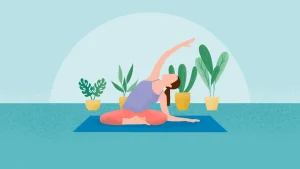Environmental Toxin Reduction in Daily Life: A Practical Guide for a Cleaner, Healthier Home

Let’s be honest. The phrase “environmental toxins” sounds intimidating, like something from a sci-fi movie. It can feel so big, so industrial, that we forget the battle often starts right in our own kitchens, bathrooms, and living rooms. But here’s the deal: you don’t need a hazmat suit to make a difference.
Reducing your exposure is less about achieving impossible perfection and more about making a series of smarter swaps. It’s a slow, steady waltz, not a frantic sprint. And honestly? It’s empowering. Let’s dive into the simple, effective ways you can clear the air—and the surfaces—in your daily life.
Your Kitchen: The Heart of the Home, Not a Chemical Hub
The kitchen is where we nourish our families. Yet, it can be a surprising source of hidden toxins. From what we cook with to how we clean, a few changes here can have a massive impact.
Cookware and Food Storage
Non-stick pans are convenient, sure. But when they get scratched or overheated, they can release questionable particles and gases. It’s a bit like a comfortable but unreliable friend—great until they aren’t.
Consider switching to:
- Cast iron: The timeless classic. It lasts forever and naturally becomes non-stick with proper seasoning.
- Stainless steel: Durable, reliable, and perfect for achieving those delicious fonds for sauces.
- Glass or ceramic containers: For food storage, ditch the old plastic tubs. Glass doesn’t leach chemicals, especially when reheating leftovers. A no-brainer, really.
The Cleaning Caddy Makeover
That pine-scented spray? It might be masking a cocktail of volatile organic compounds (VOCs) that pollute your indoor air. The good news is that effective, natural toxin-free cleaning is simpler than you think.
You can create a powerhouse cleaner with just a few ingredients:
- White vinegar
- Baking soda
- Castile soap
- Essential oils like lemon or tea tree for scent (if you like)
A simple all-purpose spray? Mix equal parts water and vinegar in a spray bottle. For scrubbing, baking soda is your gritty, effective best friend. This shift not only reduces plastic waste but also fills your home with cleaner, truly fresh air.
Your Personal Care Routine: Skin Deep Safety
Our skin is our largest organ, and what we put on it gets absorbed. The world of cosmetics and personal care is, frankly, a wild west of unregulated ingredients. It’s enough to make your head spin.
Becoming a label detective is your superpower here. Look out for and try to avoid common culprits like:
| Phthalates | Often hidden in “fragrance,” they’re plasticizers linked to endocrine disruption. |
| Parabens | Preservatives that can mimic estrogen in the body. |
| Sodium Lauryl Sulfate (SLS) | A harsh foaming agent that can strip skin and hair. |
| “Fragrance” or “Parfum” | A protected trade secret that can mask dozens of potentially irritating chemicals. |
The move towards non-toxic personal care products isn’t just a trend; it’s a return to simplicity. Seek out brands that are transparent about their ingredients. Or, explore simple DIY options—like using coconut oil as a moisturizer or a hair mask. Your body—and the waterways these products eventually wash into—will thank you.
The Air You Breathe: Cultivating a Fresh Indoor Oasis
Indoor air can be up to five times more polluted than outdoor air. Yep, you heard that right. It’s a silent, invisible issue. But we can fight back with some literal breath of fresh air.
Purify with Plants and Ventilation
Houseplants do more than just look pretty. They are nature’s air filters. Spider plants, snake plants, and peace lilies are all champions at pulling toxins from the air. They’re also notoriously hard to kill, which is a bonus for those of us without a green thumb.
And the simplest hack of all? Open your windows. Even for just 10-15 minutes a day, ventilating your home flushes out stagnant, polluted air and brings in the new. It’s free, it’s easy, and it’s incredibly effective.
Be Scent-Smart
We love a home that smells good, but synthetic air fresheners and scented candles are major offenders. They coat your nasal passages in a chemical film to mask odors. Instead, try an essential oil diffuser, or simply simmer citrus peels and cinnamon sticks on the stove. The scent is real, it’s wholesome, and it won’t leave a toxic residue.
Sustainable Shopping: Your Wallet is a Vote
Every purchase is a tiny signal to the market. By being mindful of what we bring into our homes, we support a less toxic world for everyone. This is where reducing environmental toxins meets a broader lifestyle shift.
A few painless habits to build:
- Embrace the bulk aisle. Bring your own jars and bags to fill with grains, nuts, and spices. It cuts down on plastic packaging dramatically.
- Carry reusable bags. It’s an old tip, but it’s gold. Stash them in your car so you don’t forget.
- Choose natural fibers. For clothing and home textiles, opt for organic cotton, linen, or hemp. They’re produced with far fewer pesticides than conventional cotton.
This isn’t about buying a whole new sustainable wardrobe overnight. It’s about the next time you need a t-shirt, you pause and choose the organic cotton one. Small, consistent actions.
A Final Thought: Progress, Not Perfection
The goal of environmental toxin reduction isn’t to live in a sterile bubble. It’s about awareness. It’s about making one better choice this week that you didn’t make last week. Maybe you swap out one cleaning product. Or you read the label on your shampoo for the first time.
Each small step is a whisper to the world that you care about the health of your home and the planet. And you know what? Those whispers, together, create a roar of change. It all starts right where you are.







